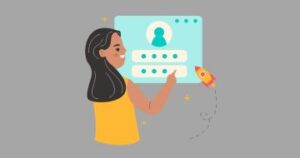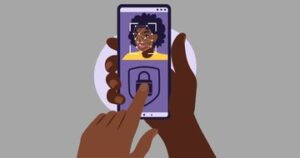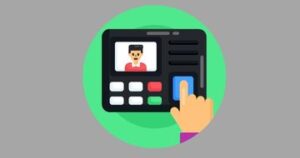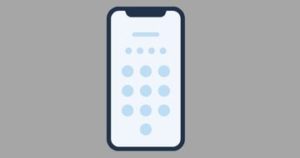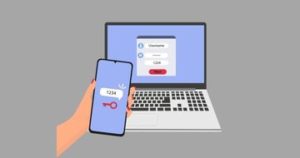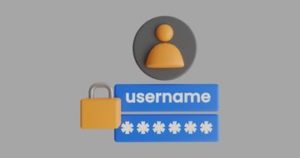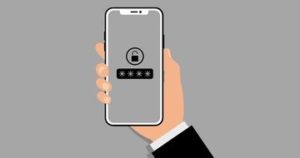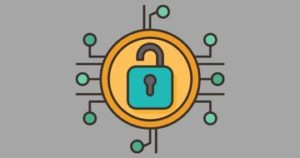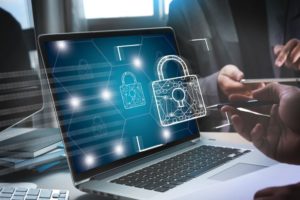Introduction
Identity theft is a grave concern in the digital age, as so much of our personal information lies vulnerable online. Malicious actors can easily access and utilize someone else’s identity without their consent or knowledge.
In 2021, identity crime skyrocketed by 36%, reaching an unprecedented level. The pandemic has created a plethora of opportunities for hackers as more and more people now rely on online services to meet their daily needs.
Fortunately, you can take proactive measures to protect yourself from identity theft and ensure the safety of your data.
This guide provides an essential starting point for online security.
What is Identity Theft?
Identity theft is a crime that involves the illegal acquisition and use of someone else’s personal data, often for financial gain.
This information can include names, addresses, Social Security numbers, bank account details, and credit card numbers – all of which can be used to open new accounts under the victim’s name or make unauthorized charges on existing ones.
Check out this graph to get the number of complaints lodged in US in 2021:

Identity thieves can also manipulate passwords and contact customer service to change billing addresses in order to acquire goods or services without detection.
In more extreme cases, they even take advantage of stolen information by filing false tax returns and receiving refunds from the IRS.
Victims of identity theft can face severe financial and legal repercussions, such as damaging their credit rating, facing fraudulent charges in their name, or even criminal prosecution if the thief commits other crimes using the stolen data.
How Does One Steal Personally Identifiable Information Online?
Identity thieves employ various methods to access your personal information online. As security systems become more sophisticated, they must find ways to overcome new barriers – and there are some highly intelligent minds breaking through even the strongest security measures.
Common tactics include:
Phishing
Criminals will often set up fake websites designed to look like those of legitimate businesses, sending victims there through links in emails.
Once the victim provides their confidential information, it can be abused for malicious activities such as opening new credit accounts without authorization, making fraudulent purchases, or stealing money from existing accounts.
Phishing isn’t limited to fake websites, however; it can also be a highly personal attack in which a scammer pretends to form a relationship, romantic or otherwise, with an individual.
They reach a point of vulnerability with the victim where they can ask for – and receive – sensitive information like bank details.
Malware
Malware has been around for decades since the first virus was created and stored on a floppy disk drive. Malicious programs have only grown in sophistication since then.
They can be installed without the user’s knowledge when they click on a malicious link or download a file from an untrustworthy source.
This malicious software captures data such as passwords, credit card numbers, and other personal information that criminals use to access financial accounts, steal money and open new lines of credit in the victim’s name.
Unsecured Wi-Fi Networks
Public Wi–Fi networks are unsecured, meaning they don’t require a password to join. This makes them vulnerable to malicious actors attempting to intercept your data traffic and gain access to sensitive information.
Hackers can easily intercept unencrypted internet traffic from unsuspecting users, allowing them to pilfer personal information such as usernames, passwords, credit card numbers, and more.
Malefactors may also leverage malicious software (malware) on public Wi–Fi networks to spy on or take control of devices connected to the network.
With enough personal information, they can commit fraud and other illegal activities under the stolen identity.
Data Breaches
Criminals can also gain access to personal or financial information through data breaches perpetrated by someone else.
A data breach occurs when confidential information is exposed without authorization, compromising the security of individuals or organizations.
Cybercriminals often exploit data breaches to access sensitive information. Common methods include hacking into a system, stealing confidential records from a company’s server, or exploiting vulnerable software.
Once cybercriminals access this sensitive information, they can use it to commit identity theft – either directly using the stolen credentials or selling them on the dark web for others to exploit.
Social Media
Social media is an ideal target for criminals looking to gain sensitive information about potential victims. Birthdates, addresses, full names, and even family details can be readily accessed through profiles and posts.
Criminals can use these details to put together a comprehensive picture of an individual, which they may then exploit to commit identity theft.
This could involve opening new credit and debit cards in their name, taking out loans without permission, or creating false accounts with malicious intent.
During these absences, scammers can take advantage of the lack of monitoring and commit fraud without being detected. So it’s best to be discreet about your whereabouts on social media.
Ways to Prevent Identity Theft Online
Stay one step ahead of hackers by understanding the tactics they use to gain access to your personal information.
Here are some tips on how to safeguard yourself from identity theft online:
1. Use strong passwords
Create strong passwords that are difficult to guess or crack. This will make it harder for malicious actors to gain access to your personal information and compromise your online security.
You can craft secure passwords for your online accounts by using a password generator. Ensure that each one is at least 8 characters long and includes a mix of letters, numbers, and special symbols.
To further protect yourself, create unique passwords for each of your accounts. A password manager can help keep track of them all and ensure that you don’t have to memorize a complicated combination for every site.
2. Enable two-factor authentication

Take your online security to the next level by enabling two–factor authentication. This requires you to provide two pieces of evidence when logging into accounts – usually a password or PIN, plus something else like a one–time code sent via text message or biometric scan (e.g., fingerprint recognition).
This additional layer of security makes it virtually impossible for hackers to gain access to your account, as they would need the second factor in order to authenticate.
3. Keep personal information private
Be mindful of the personal information you share online. Limiting what you make available reduces the risk of it being accessed and used fraudulently.
This includes Social Security Numbers, bank account numbers, and credit card numbers—do not divulge these to websites or people you don’t know.
Moreover, always review a website’s privacy policy before providing any details. Guarantee that your personal data won’t be shared with third parties without your approval.
4. Monitor your accounts regularly
Remain vigilant of your accounts and monitor them regularly. This enables you to detect any unusual or unauthorized activity quickly. Periodically review your bank statement and credit report for accuracy.
If you notice anything amiss, alert your financial institution or the Federal Trade Commission without delay. They will be able to investigate the issue swiftly, safeguarding both your funds and personal information.
5. Use secure websites
Ensure your security by only engaging with websites that feature “https” in their address. This indicates that the website is encrypted and helps protect against identity theft, safeguarding any passwords or credit card numbers you may input.
Always opt for secure websites which use digital signatures to guarantee genuine content and protect you from malicious code disguised as something else. This is crucial to safeguard your personal data, such as passwords and credit card numbers.
With secure sites, you can verify that the content is genuine and not malicious. Extra security measures such as captchas or two–factor authentication may also be employed to ensure only authorized users gain access to certain areas.
6. Don’t click on suspicious links
Be wary of any links sent to you, even if they appear to be from a trusted source. To check whether the link is legitimate, hover over it and view the full URL.
Criminals may use slight misspellings or substitutions in URLs, such as using “.cm” instead of “.com”; this can make a malicious website look like it’s legitimate and could download malware onto your computer.
7. Avoid connecting to public Wi-Fi
To reduce your risk of data interception, it’s best to avoid public Wi–Fi networks. These networks are often unsecured and can leave you vulnerable to anyone within range who may be able to access any information being transmitted.
If you must use public Wi–Fi, take the extra precaution of using a Virtual Private Network (VPN). This will encrypt your data and keep it safe from any malicious actors trying to intercept it.
Other Ways Criminals Can Steal Your Identity
Aside from the internet, criminals can access your personal information through a variety of other means. These include:
Dumpster Diving
Criminals may resort to dumpster diving, combing through people’s discarded items in search of sensitive personal information.
It’s easy to overlook how vulnerable we can be when it comes to disposing of our personal information.
From receipts and bills to credit card statements and discarded bank records – carelessly tossed aside items could easily fall into the wrong hands and become a tool for identity theft.
Secure your information by routinely shredding documents before throwing them away.
Device Skimming
Criminals have become increasingly sophisticated in their methods of stealing personal information. Device skimming is one such method whereby malicious devices referred to as “skimmers” are placed on credit card readers, ATMs, and other electronic payment terminals.
Once a customer uses the terminal, the skimmer captures their data which is then sent to the criminal, who can use it for fraudulent purchases or accessing bank accounts.
To protect yourself from device skimming, inspect the terminal for any signs of tampering, such as loose parts or attachments. If anything appears suspicious, avoid using the card reader altogether.
Stealing Physical Items
Identity theft isn’t just a virtual problem; physical items like mail, wallets, and even phones or laptops can be stolen for access to your personal information and financial accounts.
To protect yourself from device skimming, watch out for signs of tampering at the terminal, such as loose parts or attachments – if something looks suspicious, avoid using it.
Protecting yourself from physical theft requires mindful awareness of your environment, secure storage, and never leaving valuable items unattended.
What to Do If You’ve Been a Victim of Identity Theft
If you suspect that your identity has been compromised, act fast to limit the damage. Follow this process:
1. Take swift action if you suspect your identity has been compromised: report the incident to the police and file a complaint with the FTC, as well as contact credit bureaus like Experian or Equifax to place fraud alerts on your accounts.
2. Close any accounts that have been compromised, then change the passwords for all other online accounts. For added security, create unique and complex passwords that include a combination of both upper–case letters, lower–case letters, numbers, and symbols.
3. Ensure your financial security by actively monitoring your credit report and accounts for any suspicious activity. To further protect yourself, consider signing up for identity theft protection services such as LifeLock or IdentityForce which will keep an eye on your information at all times.
4. Dispute any fraudulent charges with the credit bureaus and creditors to have them removed from your account. You may need to provide evidence demonstrating the purchases were unauthorized in order for them to be reversed.
5. See if you’re covered by identity theft insurance. Your homeowner’s or renter’s policy may include protection against losses due to identity theft. If not, consider investing in an identity theft protection plan.
Conclusion
Identity theft is a serious concern and can occur in many ways. However, with due diligence both online and offline, you can safeguard yourself from falling prey to this crime.
If you suspect identity theft, it is crucial to act swiftly in order to mitigate the consequences.
It’s wise to stay informed on identity theft and the steps you can take to safeguard yourself. With these proactive measures in place, you’ll be able to maintain control of your online presence and keep criminals at bay.
